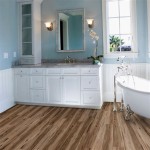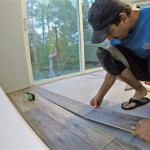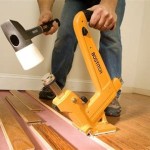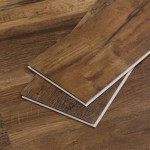Flooring That Looks Like Wood Planks: A Comprehensive Guide
The desire for the aesthetic appeal of hardwood flooring is widespread. However, the high cost, maintenance requirements, and limitations in certain environments often make traditional hardwood an impractical choice for many homeowners and businesses. Fortunately, advancements in manufacturing technology have led to the development of flooring options that convincingly replicate the look of wood planks, offering a balance of visual appeal, durability, and affordability. These alternatives include laminate, luxury vinyl plank (LVP), and porcelain tile.
Choosing the right flooring that mimics wood planks requires careful consideration of various factors, including budget, intended use, maintenance preferences, and environmental conditions. This article provides a detailed overview of the most popular options, highlighting their key characteristics, advantages, and disadvantages.
Understanding Laminate Flooring
Laminate flooring is a multi-layer synthetic flooring product fused together through lamination. It typically consists of four layers: a backing layer for stability, a core board made of high-density fiberboard (HDF) or medium-density fiberboard (MDF), a photographic image layer that provides the wood-look design, and a transparent wear layer for protection against scratches, stains, and fading. The photographic layer is what enables laminate to convincingly mimic the appearance of various wood species, grains, and textures.
Laminate flooring offers several advantages. It is significantly more affordable than genuine hardwood, making it an attractive option for budget-conscious consumers. Installation is relatively straightforward, often employing a click-lock system that requires no glue or nails, making it suitable for DIY projects. The wear layer provides good scratch and stain resistance, making it a durable choice for high-traffic areas. Laminate is also easy to clean, typically requiring only sweeping or damp mopping.
However, laminate flooring also has some drawbacks. It is not waterproof and can be damaged by prolonged exposure to moisture. Spills should be cleaned up promptly to prevent swelling and warping. While the wear layer offers protection, it is not as resilient as hardwood and can be scratched by heavy objects or abrasive cleaners. Laminate flooring generally does not add as much value to a home as genuine hardwood.
The quality of laminate flooring can vary significantly depending on the thickness of the wear layer, the density of the core board, and the quality of the photographic image. Higher-quality laminate flooring will have a thicker wear layer, a denser core board, and a more realistic wood-look design. It is beneficial to compare specifications and read reviews before making a purchase.
When choosing laminate flooring, consider the AC (Abrasion Class) rating, which indicates its resistance to wear and tear. AC ratings range from AC1 (suitable for light residential use) to AC5 (suitable for heavy commercial use). For most residential applications, an AC3 or AC4 rating is sufficient.
Exploring Luxury Vinyl Plank (LVP) Flooring
Luxury vinyl plank (LVP) flooring is a type of resilient flooring designed to replicate the appearance of wood planks. It is constructed from multiple layers of vinyl, including a backing layer, a core layer, a decorative layer with a printed wood-look image, and a wear layer for protection. LVP often incorporates textures and embossing to further enhance the realistic wood feel.
One of the primary advantages of LVP flooring is its water resistance. Unlike laminate, LVP is highly resistant to moisture and can be installed in areas prone to spills and humidity, such as bathrooms, kitchens, and basements. The material is also durable and can withstand high traffic, impacts, and scratches. LVP is typically more comfortable underfoot than laminate or tile due to its inherent flexibility.
LVP is available in a wide range of styles, colors, and plank sizes, offering a variety of design possibilities. The installation process is relatively simple, with most LVP products featuring a click-lock system that allows for easy floating installation. Some LVP options can also be glued down for added stability.
While LVP is water-resistant, it is not completely waterproof. Prolonged exposure to standing water can still cause damage, particularly at the seams. LVP may also be susceptible to fading from prolonged exposure to direct sunlight. The cost of LVP can be higher than laminate, depending on the quality and features.
The wear layer thickness is a critical factor to consider when choosing LVP flooring. A thicker wear layer (typically measured in mils) provides greater protection against scratches, dents, and wear. For residential applications, a wear layer of 12 mils or greater is generally recommended. For commercial applications, a wear layer of 20 mils or greater is preferable.
LVP flooring is considered a relatively eco-friendly option compared to some other flooring materials. Many LVP products are made from recycled materials and are recyclable at the end of their lifespan. Look for LVP products that are certified by organizations such as FloorScore, which ensures low emissions of volatile organic compounds (VOCs).
Considering Porcelain Tile Flooring
Porcelain tile is a type of ceramic tile made from a denser clay and fired at higher temperatures than standard ceramic tile. This process results in a tile that is exceptionally strong, durable, and water-resistant. Porcelain tile that replicates the appearance of wood planks offers a unique combination of the aesthetics of wood with the performance characteristics of tile.
Porcelain tile is virtually waterproof, making it an ideal choice for bathrooms, kitchens, laundry rooms, and other areas exposed to moisture. It is also highly resistant to scratches, stains, and fading, making it a durable option for high-traffic areas. Porcelain tile is easy to clean and maintain and can withstand extreme temperatures, making it suitable for both indoor and outdoor applications.
Wood-look porcelain tile is available in a wide range of colors, sizes, and textures, allowing for the creation of realistic wood-like floors. The tile can be installed in various patterns, such as brick, herringbone, or staggered, to further enhance the visual interest. The technology for printing the wood grain onto the tile surface has advanced significantly, resulting in very realistic and detailed designs.
One of the main drawbacks of porcelain tile is its hardness. It can be uncomfortable to stand on for extended periods without proper cushioning. The material is also cold underfoot, which may be a concern in colder climates. Installation of porcelain tile is more labor-intensive and requires specialized tools and skills, potentially leading to higher installation costs compared to laminate or LVP.
Porcelain tile can be more expensive than laminate or LVP flooring, although the long-term durability and low maintenance costs can offset the initial investment. The grout lines between the tiles can be susceptible to staining and require regular cleaning to maintain their appearance.
When selecting wood-look porcelain tile, it is important to choose a tile with a high PEI (Porcelain Enamel Institute) rating. The PEI rating indicates the tile's resistance to abrasion and wear. A PEI rating of 3 or higher is generally recommended for residential applications.
The choice of grout color can significantly impact the overall appearance of the floor. Consider using a grout color that complements the wood-look design of the tile. Epoxy grout is a more durable and stain-resistant option compared to traditional cement-based grout.
Ultimately, the best flooring option that looks like wood planks depends on individual needs, preferences, and circumstances. Laminate flooring offers an affordable and relatively easy-to-install option with good scratch and stain resistance. Luxury vinyl plank (LVP) provides excellent water resistance and durability, making it suitable for moisture-prone areas. Porcelain tile offers exceptional strength, water resistance, and longevity, but requires professional installation.
Vinyl Flooring That Looks Like Wood
Vinyl Flooring That Looks Like Wood
Vinyl Flooring That Looks Like Wood

A Surfaces Balsam 20 Mil X 7 In 48 Waterproof Lock Luxury Vinyl Plank Flooring 23 8 Sq Ft Case Hd Lvr5015 0011 The Home Depot

Tranquility Ultra 5mm Rustic Reclaimed Oak Waterproof Luxury Vinyl Plank Flooring 6 65 In Wide X 48 Long Ll
:max_bytes(150000):strip_icc()/J_wcyCT1-7e379c089c8545a0babf4d5235a0a856.jpeg?strip=all)
Vinyl Flooring That Looks Like Wood

Vinyl Flooring That Looks Like Wood Top Picks 2024 Panel Town Floors

The Best Fake Wood Flooring 4 Faux Floor Ideas Inc

Tranquility Xd 4mm Rail Tie Oak Waterproof Luxury Vinyl Plank Flooring 7 08 In Wide X 48 Long Ll

The Ultimate Guide To Wide Plank Flooring Mayriver
Related Posts








